Maseres Project – Urban Barry Gold Camp,Quebec
Project Snapshot:
Highlights:
- Large VTEM Target
- 7 Targets defined by Till Soil Anomalies
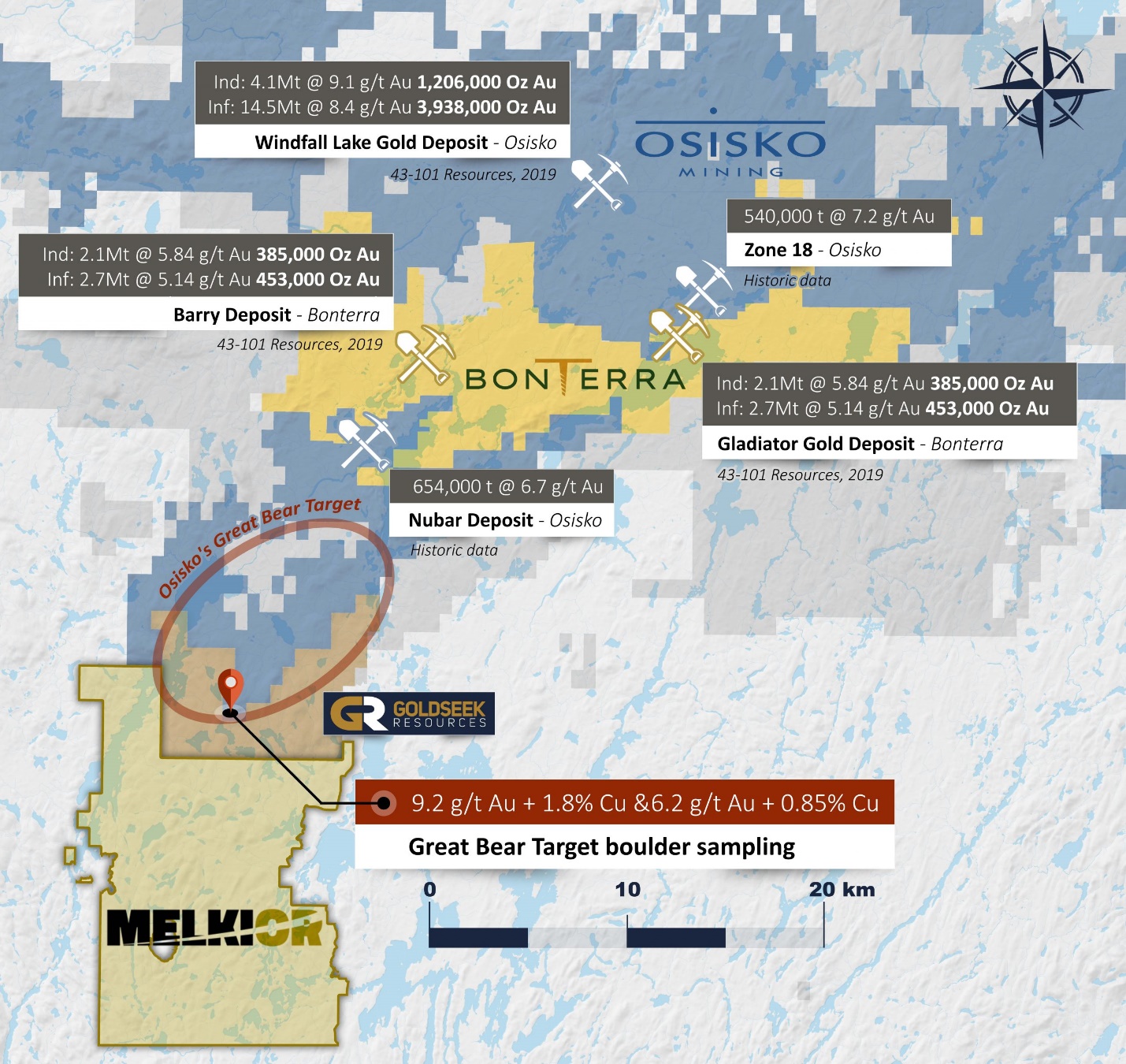 Melkiors claim group, predominantly located in Maseres Township, adjacent and south of Souart and Barry Townships in the Urban-Barry Gold Camp in Quebec, Canada. The Maseres Project is immediately south of Osisko Mining and Goldseek Resources Inc. claim groups that straddle the boundary of Souart and Maseres Townships.
Melkiors claim group, predominantly located in Maseres Township, adjacent and south of Souart and Barry Townships in the Urban-Barry Gold Camp in Quebec, Canada. The Maseres Project is immediately south of Osisko Mining and Goldseek Resources Inc. claim groups that straddle the boundary of Souart and Maseres Townships.
The Maseres Project is considered to be “underlain by Archean-age volcanosedimentary gneisses which represent the metamorphosed southern extension of the Urban-Barry Greenstone Belt of the Abitibi Subprovince.”. A folded continuation of the geologic units that trend through Souart, Urban and Barry Townships. The Urban – Barry Greenstone Belt contains the Barry, Gladiator and Windfall deposits and is the current focus of several multi-million-dollar exploration campaigns.
The Black Dog Project is reported by Osisko to be a gold-silver-copper discovery in andesitic volcanics that… “ coincides with magnetic and electromagnetic anomalies.. with disseminated to semi-massive Au-Ag-Cu bearing sulfides”. Historical geophysical work identified a significant conductive trend with associated electromagnetic anomalies coincident with an iron formation that crosses Osisko and Goldseek and Melkior claim groups. Historical surface assessment work, indicates that this formational conductor is locally co-located with two mineralized boulders. The mineralized boulders are located on Osisko claims within 150 m of the Goldseek property boundary, and 2.3 km north of Melkior’s claims.
Location of mineralized boulders:
EASTING* | NORTHING* | SAMPLE | GOLD (OPT) | COPPER (%) |
433483 | 5408817 | K-92-53 | 0.20 | 0.85 |
433469 | 5408822 | K-92-62 | 0.32 | 1.80 |
*NAD 83 Zone 18, location extrapolated from filed assessment maps (GM55916)
The boulders mentioned above have been described in filed assessment reports as follows, “Brecciated, gneissic, pyrrhotitic iron formation recemented by pyrite and chalcopyrite, one of the boulders contained arsenopyrite. No known mineralization of this type is known in the Urban Barry Belt to the north and in any case the gneissic condition of the boulders precludes a source in the greenschist facies of rocks of this belt. Therefore a proximal source was sought.” The work report further indicates that “… investigations revealed unmineralized, SW dipping, pyrrhotitic iron formation coincident with the conductor. This gneissic iron formation was mineralogically and texturally similar to the least brecciated portions of the mineralized boulders … the iron formation was considered to be a prime potential source for the boulders.”
Melkiors Maseres Project covers the southern half of the aforementioned formational conductor where the formational conductor appears to be significantly folded and locally disrupted. Melkiors claim group captures the majority of the fold nose of the formational conductor and the known westerly continuation of the formational conductor.
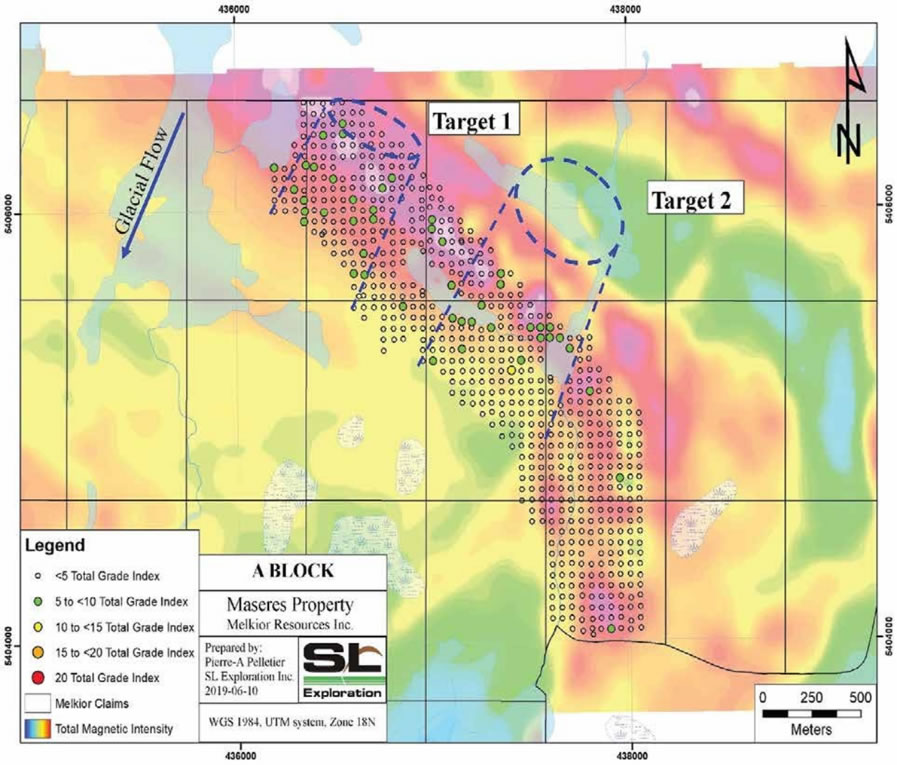
Targets 1&2:
- Next to the 2018-2019 drill program that focused on high conductivity anomalies.
- The soil anomalies, sitting right on top of the drill holes suggest an up-ice source. This means the soil anomalies would instead be associated with lower conductivity anomalies.
- Soil survey and boulder sampling should be done to properly define the rock source of the anomalies by looking at boulders. Following that, the expected IP response from the mineralization found in the boulders will be defined and similar IP anomalies from the 2018 program will become prime targets for drilling.
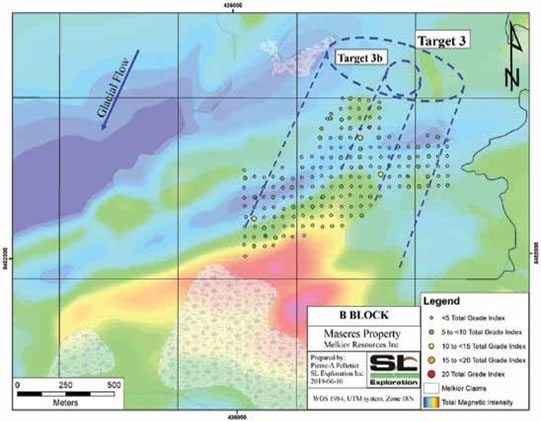 | 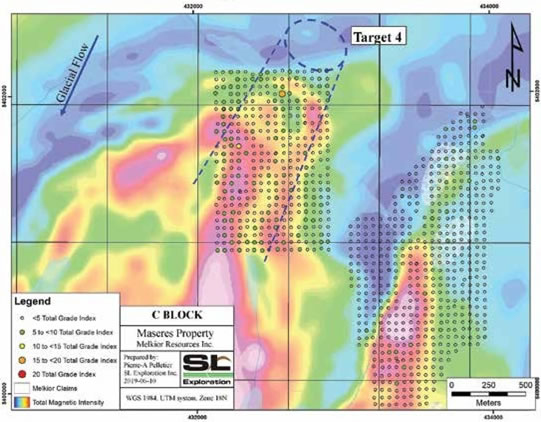 | 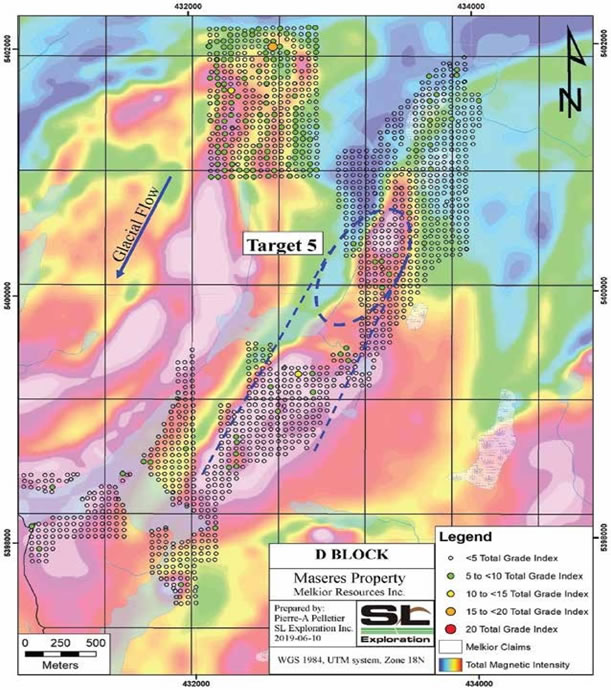 |
Targets 3,4&5:
- Melkior has additional targets that can be easily followed upon for a relatively low cost. This will either confirm or infirm the anomalies. Confirmed anomalies will become very significant targets since a source would have to be located on the Maseres property.
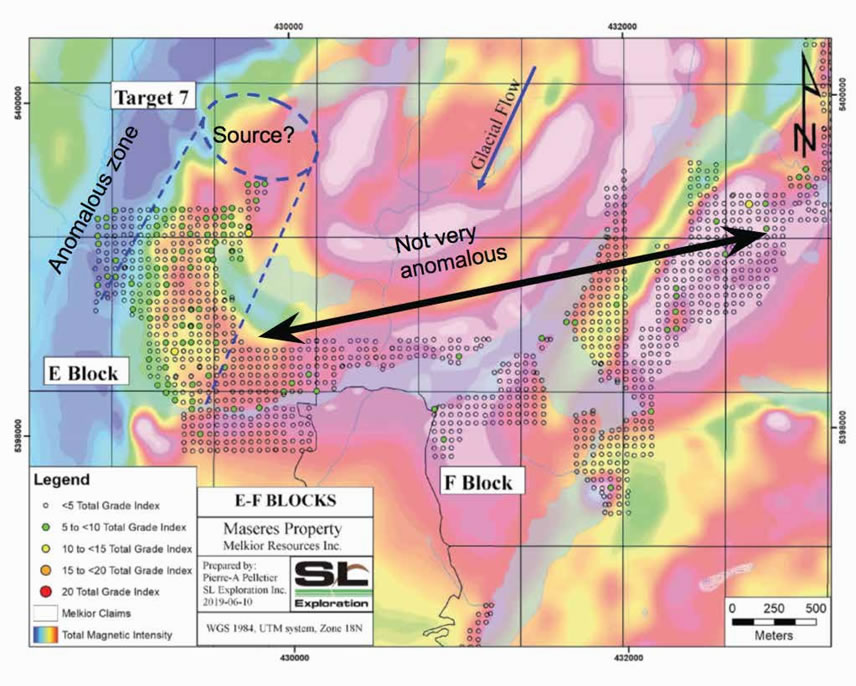
Targets 7:
Multiple anomalous samples in the same cluster show a high potential for a common source to all of the soil anomalies. This contrast highly with the other samples in the same area.


